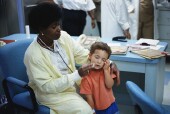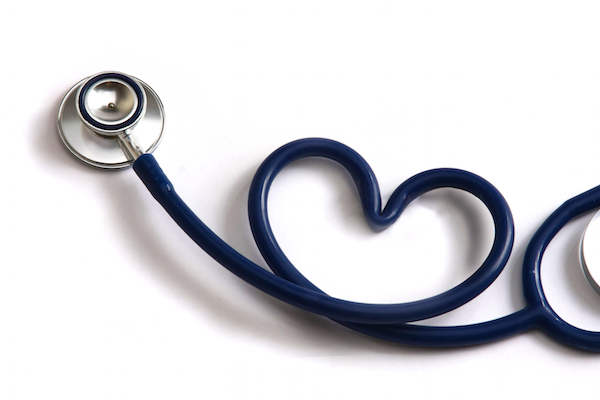
MONDAY, July 26 (HealthDay News) — Injuries from contact lenses, intravenous tubes and other “medical devices” send more than 70,000 American children to emergency rooms each year, a new study shows.
“The device injury rate among the kids were driven by only a handful of device categories,” said lead author Dr. Cunlin Wang, a medical epidemiologist in the Office of Surveillance and Biometrics at the U.S. Food and Drug Administration. “Seventy percent of the device injuries are coming from ophthalmic devices, general hospital and ob/gyn devices.”
The report is published in the August issue of Pediatrics.
The researchers combed through information from a national injury-reporting database. They focused on children treated in emergency departments for medical device-related injuries from early 2004 through late 2005.
The team report that during that two-year period, 144,799 such visits occurred nationwide, encompassing 13 medical specialties. The majority of injuries were from contact lenses (23 percent) followed by hypodermic needles (8 percent).
The most common types of injuries were contusions and abrasions, foreign-body intrusions, punctures, lacerations and infections. Most often, injuries affected the eyeball, pubic area, fingers, face and ears.
The most common injuries overall were related to contact lenses causing damage to the eyeball, the researchers found. Among young children, the most common problems are with shunts (implanted devices that allow passage of fluid within the body), intravenous tubes and tubes placed in the stomach.
As children progressed from early to late childhood the frequency of injuries linked to medical devices dropped. However, they rose again after age 10.
For children aged 10 and younger, boys were more likely to be injured than girls, while in the 16-to-21 age group girls had more injuries than boys, the team found.
“This study is an important estimate of device injury that we have in the pediatric population,” Wang said, noting that before this study there was no such estimate, he added.
Ophthalmic devices include contact lenses, eye glasses and eye protection devices. General hospital devices include infusion pumps, catheters and even hospital beds. Ob/gyn devices include contraceptive devices and injury from vaginal exams, according to the study.
By focusing attention on these specific areas it might be possible to cut down the number of injuries children sustain from medical devices, Wang said. “The scope and severity of pediatric device-associated adverse events underscore the need for more intensive preventive efforts,” he and his colleagues wrote.
One expert agreed that, among young children, the bulk of device-linked injuries are tied to tubes placed in the stomach, shunts or IV tubes.
“We see a few of those a week,” said Dr. Valerie T. Thompson, an assistant professor of clinical pediatrics and division director of pediatric emergency medicine and medical director of the pediatric emergency department at the University of Miami Miller School of Medicine.
Wider education is key to curbing the numbers, she added.
“We need to find a window of time to educate parents” on the dangers of medical devices and their safe use, Thompson said.
More information
For more information on childhood safety, visit the Safe Kids USA.

